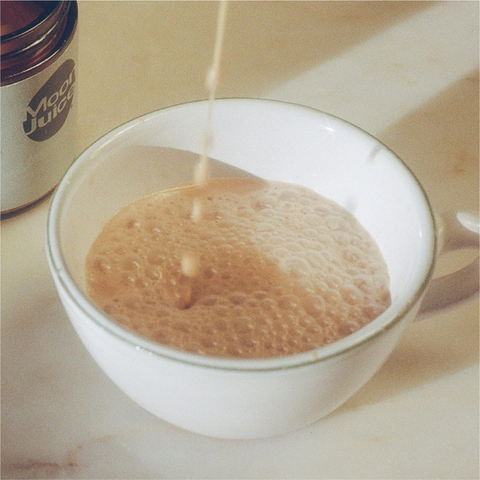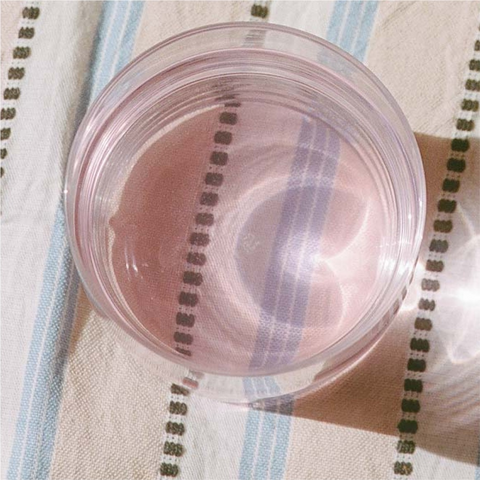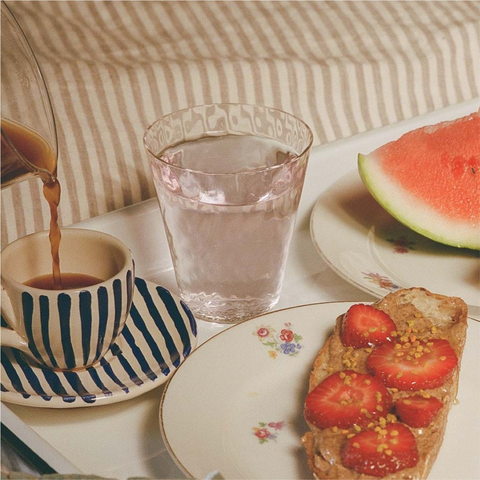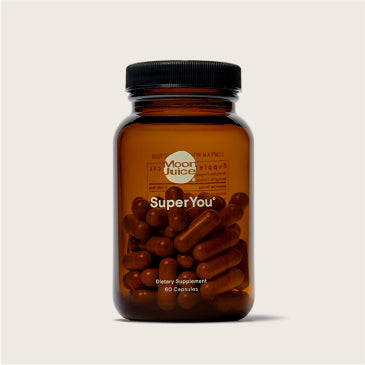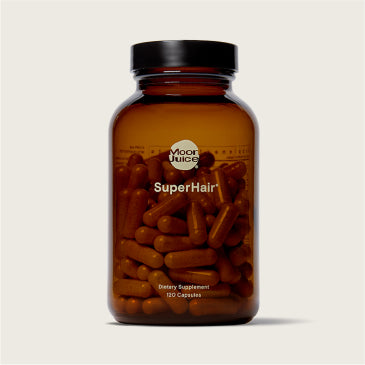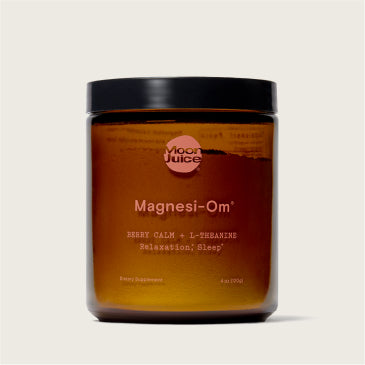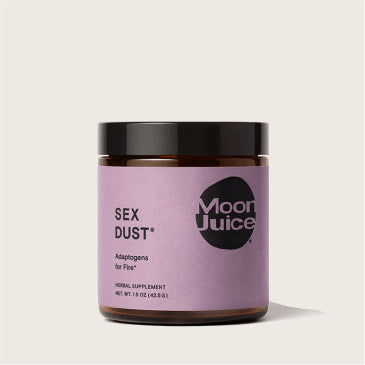It's easy to overlook the subtle yet crucial signs that our hair reveals about its true health. Hair communicates its distress through nuanced signs that often go overlooked.
Unhealthy hair can be identified by the fracture of strands, the emergence of split ends, and the gradual thinning that comes from internal imbalances. Meanwhile, healthy hair can be recognized by its luster, elasticity, and volume.
Knowing the differences between healthy and unhealthy hair is essential to identify when your hair (and body!) is asking for extra care and support.
In this article, we’ll dive into the key signs of healthy vs. unhealthy hair, explore what actionable changes you can make to nourish unhealthy strands back to health, and outline a holistic hair care routine to sustain that health.
Signs of Unhealthy Hair
Unhealthy hair lacks vitality, manifesting as lifeless, lackluster strands. While the sources of an unhealthy mane are diverse — ranging from environmental damage, stress, and heat exposure to nutritional deficiencies and hormonal imbalances — the signs are clear and consistent. Let's delve into these unmistakable indicators that urge us to listen more closely to our hair's need for greater care.
Breakage
Exposure to environmental elements can play a major role in altering hair health, potentially resulting in breakage. This occurs when the structural integrity of hair strands weakens, leaving them susceptible to snapping under even minimal tension. The evidence of hair breakage can be seen during routine activities like brushing, as strands snap under the stress.
Hair Thinning and Hair Loss
It's important to distinguish between hair loss and hair shedding: while shedding signifies a temporary loss that eventually normalizes once the underlying cause is addressed, hair loss can be more pervasive. Thinning hair may manifest subtly, with noticeable changes around the temples and along the hair part. In contrast, hair loss tends to be more widespread, characterized by larger clumps of hair falling out. Hormonal imbalances, autoimmune conditions, pregnancy, and postpartum stages are common triggers for this type of hair loss and while more complex in nature, hair loss can be managed when supporting the cause of imbalance.
Split Ends
Frayed strands, commonly known as split ends, are a telltale sign of hair in distress. These splits are often the outcome of heat damage or continual friction. Harsh weather conditions can also exacerbate the problem. Comparable to a rope unraveling, hair with split ends takes on a thicker, coarser appearance, indicating weakness and damage. In cases of split ends, trimming is a recommended solution. Although split ends themselves can't be repaired, an intentional hair care routine can be adopted to foster overall hair health and minimize their occurrence.
Dullness
When hair lacks its natural shine and its color appears muted, it's a clear indication of dullness. This lackluster quality can be attributed to various factors such as product buildup, exposure to hard water, and even vitamin deficiencies. The good news is that dullness can often be managed and reversed by addressing these external, environmental variables.
Frizz
A rough, unruly texture arises from a raised and roughened cuticle layer. While occasional frizz can simply stem from humidity, consistent and persistent frizzy hair regardless of the weather can be a signal of underlying hair health issues. Nutritional deficiencies and hormonal imbalances can also contribute to the chronic presence of frizz.
Dryness
Dry hair is unmistakably characterized by its brittleness, coarseness to the touch, and lack of fluid movement. When your hair lacks moisture, it can feel stiff and rigid, often appearing lifeless, straw like, and void of its natural bounce.
Signs of Healthy Hair
Strong, healthy hair is a testament to its well-nourished state, presenting as luxurious, full, and radiant strands. Vibrant hair is generally resilient, soft, and tangle-free. Read on to learn the unmistakable traits that distinguish well-nurtured, healthy hair.
Strength and Elasticity
Resilient hair is due to its body mass and ability to withstand breakage. Strong hair possesses the full potential to grow healthily in terms of both diameter and length. This strength is evident when brushing or swimming, as it resists breaking even when subjected to pressure and friction. Hair that is strong and elastic has the ability to bend and stretch, indicating a balanced supply of protein and moisture, further contributing to its overall health.
Minimal Hair Shedding
Healthy hair goes through a natural shedding process that entails a few loose strands after brushing or showering. Minimal hair shedding is indicative of a balanced healthy scalp and may signal that nutritional needs are being met. If you notice little to no hair shedding (50-100 hairs a day is considered normal!) this is an encouraging sign of overall hair health.
Shine
Healthy hair is undeniably luminous — appearing shiny and glossy. Beyond the visual sheen, it is even-toned, and has a consistent luster from root to tip. A mane that is naturally shiny serves as a visual indicator of well-nourished hair.
Smoothness
Smooth hair is not about the absence of curls but rather the texture of each strand. Healthy hair feels soft to the touch and is less prone to tangling, allowing for easy brushing. This feeling of smoothness is an indicator that the hair strands are intact and well-moisturized.
Volume
Voluminous hair possesses a thick, full-bodied appearance. Hair body can be defined as the structural strength and resiliency of the hair, resulting in visual volume. Full volume means that the scalp is thoroughly covered with hair fibers — and this is attributed to the hair cortex growing in diameter, resulting in a mane that exudes health and vitality.
How to Fix Unhealthy Hair
To address unhealthy hair, you must delve beyond the surface and target the root causes, not just of your scalp condition, but of the internal issues that give rise to hair problems. It's essential to consider a range of factors that impact your hair's overall health and vitality. Here’s how to make your hair healthy and prevent further damage.
Manage Stress
Start by managing stress levels as oxidative stress factors can overwhelm the body, leading to unhealthy hair. Consider healthy ways to handle stress, whether that be walking, breathwork, meditation, or time in nature.
Nourish with Nutrition
Correct nutritional deficiencies by adopting a well-rounded, plant-forward diet rich in essential vitamins and minerals. Studies indicate that nutritional factors play a role in persistent increased hair shedding, even among otherwise healthy individuals.
Address Hormones
If you suspect hormonal imbalances, chat with your healthcare provider to create a plan to correct the imbalance, which can have a positive impact on hair health.
Sleep Deep
Quality sleep is integral to overall health and wellbeing, and it also supports the body's ability to generate healthy strands. Create a wind down routine that encourages a healthy sleep environment.
Engage in Movement
Assess your exercise routine and ensure it strikes the right balance. Both under and overexercising can affect stress levels, influencing hair health.
Reduce Heat Styling
Consider minimizing the use of hot styling tools, protect your hair from the elements by wearing a hat outdoors, and explore styling techniques that avoid causing hair breakage and overall damage. Try opting for air drying hair when possible instead of using a hair dryer. If you do plan to style your hair with a hot tool, make sure to use a good heat protectant.
Hydrate Hair
Provide additional support to your hair by incorporating a hair mask or leave-in conditioner for added hydration.
Support the Scalp
Healthy scalp care involves mindful washing to avoid over-stripping natural oils and using products that prevent unhealthy scalp buildup. In managing hair loss, addressing scalp issues is crucial. There are various ways to improve scalp health naturally that can help your overall hair health.
Take a Multivitamin and Hair Supplement
While a nutritious diet is vital, a multivitamin can fill unexpected nutritional gaps. Additionally, a comprehensive hair supplement can provide the necessary ingredients to foster healthy hair growth and strengthen hair.
SuperHair® is a vegan multivitamin + hair supplement that helps promote healthier, stronger, thicker hair from the inside out.* With a bioavailable multivitamin, adaptogens, botanicals, and micronutrients, this comprehensive formula addresses the nutritional deficiencies that inhibit the growth of healthy hair, helps balance stress hormones, supports healthy hair follicles, and promotes hair elasticity and smooth texture.*
By addressing these factors simultaneously, you'll be taking significant steps towards restoring your hair's natural health and vibrancy.
How to Maintain Healthy Hair
Maintaining healthy hair involves a holistic approach that acknowledges its well-being is nurtured from both the inside out and the outside in. By combining mindful practices and conscious choices, you can create a hair care routine that sustains the health of your hair.
Opt for Hair Products with Clean Ingredients
Opt for hair products containing clean and nourishing ingredients. Avoid harsh chemicals when choosing a shampoo or conditioner, as they can compromise your hair's health over time.
Balance Stress Levels
Integrate realistic stress management practices into your routine, as stress profoundly influences hair health. Engage in soothing activities that promote relaxation and mental well-being.
Nourish from Within
Fuel your hair with essential nutrients by incorporating a diverse range of fruits, vegetables, and protein-rich foods into your diet. These nutritional powerhouses contribute to strong and vibrant hair. To keep things simple, consider taking an adaptogenic multivitamin and hair supplement that covers your nutritional bases and ensures you have the right micronutrients needed to support the growth of your healthy hair.
Address Larger Health Issues
Tackle underlying health issues that might impact your hair. By actively working toward correcting these issues, you contribute to overall well-being and consequently, hair health.
Continued Sleep and Movement
Continue prioritizing quality sleep and regular physical activity. These fundamental aspects of health play a pivotal role in maintaining strong and resilient hair.
Conscious Hair Styling
When styling your hair, be mindful of heat usage. Minimize heat exposure to prevent hair damage, and explore heat-free styling alternatives to maintain hair health.
Protection from the Elements
Shield your hair from the elements, especially harsh weather conditions. Wearing a hat outdoors and using protective products can help prevent hair damage caused by environmental factors.
By integrating these practices into your lifestyle, you establish a strong foundation for sustaining the state of your already healthy hair.
Sign Up, Nerd Out
Get wellness tips, education, and recipes
delivered straight to your inbox.
Get wellness tips, education,
and recipes delivered
straight to your inbox.
Takeaway
While our hair's silent signals can often go unnoticed, educating ourselves on the differences between healthy and unhealthy hair can empower us to correct larger health imbalances. Emerging split ends, overlooked breakage, and quiet thinning unveil our body's internal story. On the flip side, shine, bounce, and volume of hair mirrors inner balance. Embracing these cues and understanding the difference between healthy and unhealthy hair can empower us to respond with care. With insights into signs, remedies, and holistic hair care tips, you can heal and maintain the health of your hair.
Sources
- Wiley Online Library, Oxidative stress and its impact on skin, scalp and hair https://onlinelibrary.wiley.com/doi/10.1111/ics.12736
- National Library of Medicine, Hair Cosmetics: An Overview https://www.ncbi.nlm.nih.gov/pmc/articles/PMC4387693/
- American Academy of Family Physicians, Diagnosing and Treating Hair Loss https://www.aafp.org/pubs/afp/issues/2009/0815/p356.html
- American Academy of Dermatology Association, Do You Have Hair Loss Or Hair Shedding? Aps://www.aad.org/public/diseases/hair-loss/insider/shedding
- Oxford Academic, Nutritional Factors and Hair Loss https://academic.oup.com/ced/article-abstract/27/5/396/6626095?redirectedFrom=fulltext
- American Academy of Dermatology Association, How to Stop Damaging Your Hair https://www.aad.org/public/diseases/hair-loss/insider/stop-damage
- American Academy of Dermatology Association, Hair Styling Without Damage https://www.aad.org/public/diseases/hair-loss/hair-care/styling

.png?v=1695654587566)
.png?v=1695654598370)



